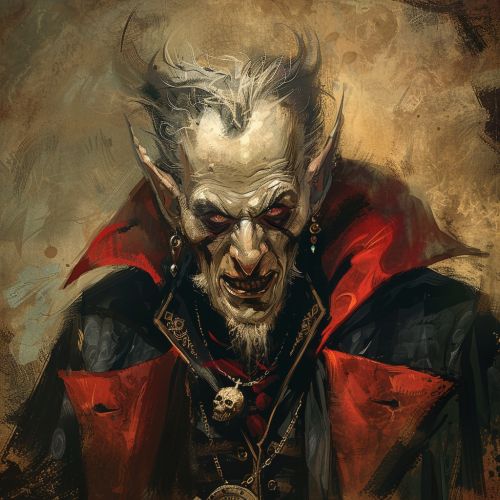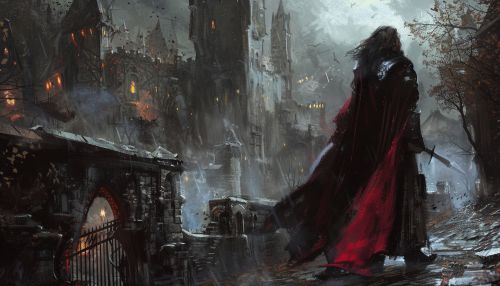Vampire: Difference between revisions
(Created page with "== Origins and History == The concept of the vampire has been prevalent in various cultures around the world for centuries. The term "vampire" itself, however, is believed to have originated in the Slavic and Balkan regions of Europe, with the first recorded use in the English language dating back to 1734. The vampire mythos has evolved and transformed over time, influenced by societal changes, religious beliefs, and popular culture. <div class='only_on_desk...") |
No edit summary |
||
| Line 2: | Line 2: | ||
The concept of the [[Vampire|vampire]] has been prevalent in various cultures around the world for centuries. The term "vampire" itself, however, is believed to have originated in the Slavic and Balkan regions of Europe, with the first recorded use in the English language dating back to 1734. The vampire mythos has evolved and transformed over time, influenced by societal changes, religious beliefs, and popular culture. | The concept of the [[Vampire|vampire]] has been prevalent in various cultures around the world for centuries. The term "vampire" itself, however, is believed to have originated in the Slavic and Balkan regions of Europe, with the first recorded use in the English language dating back to 1734. The vampire mythos has evolved and transformed over time, influenced by societal changes, religious beliefs, and popular culture. | ||
[[Image:Detail-77837.jpg|thumb|center|A depiction of a vampire from medieval folklore.|class=only_on_mobile]] | |||
[[Image:Detail-77838.jpg|thumb|center|A depiction of a vampire from medieval folklore.|class=only_on_desktop]] | |||
== Characteristics == | == Characteristics == | ||
Latest revision as of 23:53, 7 May 2024
Origins and History
The concept of the vampire has been prevalent in various cultures around the world for centuries. The term "vampire" itself, however, is believed to have originated in the Slavic and Balkan regions of Europe, with the first recorded use in the English language dating back to 1734. The vampire mythos has evolved and transformed over time, influenced by societal changes, religious beliefs, and popular culture.


Characteristics
Vampires are often portrayed as immortal beings that sustain their existence by consuming the life essence, typically in the form of blood, of living creatures. They are frequently depicted as possessing enhanced strength, speed, and other supernatural abilities. Some folklore suggests that vampires are unable to move in daylight and can be harmed or killed by sunlight, garlic, holy water, or a stake through the heart. However, these characteristics vary widely depending on cultural context and individual interpretations.
Cultural Impact
The vampire has had a significant impact on popular culture, particularly in literature, film, and television. From Bram Stoker's iconic novel Dracula to the modern Twilight series, vampires have been a staple of horror and fantasy genres. They have also been used as metaphors for societal issues, such as disease epidemics, sexuality, and fear of the unknown.
Modern Interpretations
In recent years, the portrayal of vampires has shifted from monstrous creatures to more sympathetic figures. Modern interpretations often depict vampires as complex characters struggling with their immortality and bloodlust. This shift reflects societal changes in attitudes towards the "other" and the exploration of themes such as identity, morality, and the human condition.
